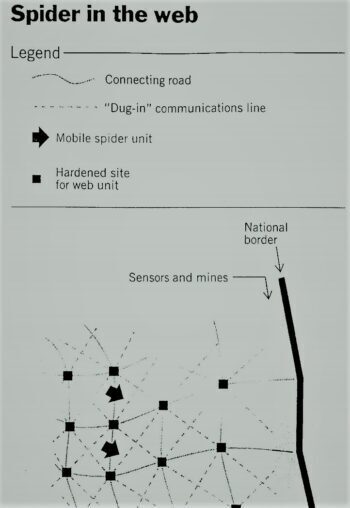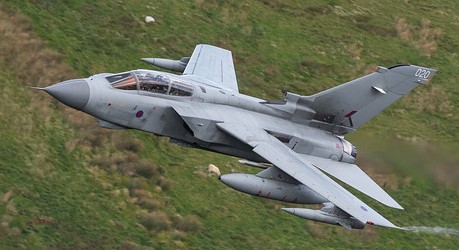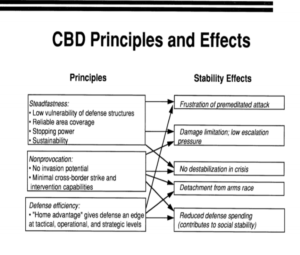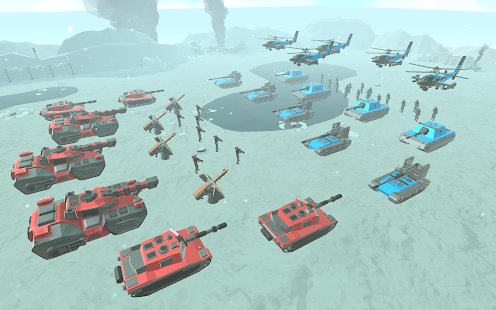Military & Strategic Studies
Rotocraft for War: Descending on a Military Dilemma
Concepts for Army Transformation: A Briefing for the Transformation Task Force
Can the United States Spend Less on Defense? — Toward a Smaller, More Efficient, and More Relevant US Military
Kosovo and the Just War Tradition
Wheels or Tracks? On the “Lightness” of Military Expeditions
U.S. Military-Strategic Ambitions — Expanding to Fill the post-Soviet Vacuum
Interventionism Reconsidered: Reconciling Military Action With Political Stability
Alleged ‘Carrier Gap’ is Out to Sea
Military Strategy Under Review
“’Environment shaping’, the other ascendant element in the new strategy, prescribes a more active peacetime use of military power to influence the course of strategic affairs. It encompasses not only traditional deterrence, but also the goals of discouraging other nations from even trying to compete militarily with the U.S. and of ‘preventing the emergence of a hostile regional coalition or hegemon’ Key to achieving this novel “preemptory” deterrence is the maintenance of a robust U.S. regional presence, a daunting degree of U.S. military superiority, and a technological edge that no prospective competitor could hope to diminish.”
Maneuver Warfare Principles and Terms
by Carl Conetta, PDA Briefing Memo, 12 March 1998. ⇒ HTML
A brief on the terminology and principles of maneuver warfare as distinct from attrition warfare.
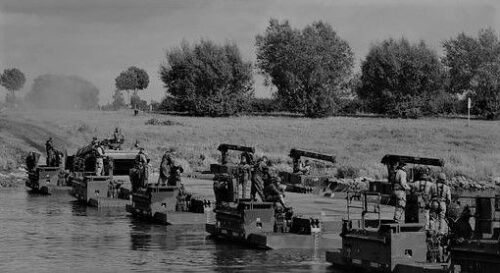
Defense Sufficiency and Cooperation: A US Military Posture for the post-Cold War Era
Dueling with Uncertainty: the New Logic of American Military Planning

The Development of America’s post-Cold War Military Posture: A Critical Appraisal
By Carl Conetta, 07 November 1996.
➪ HTML
➪ PDF
This article outlines the factors influencing and distorting military planning (with special attention to the 1992-1996 period.)
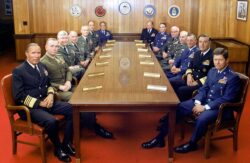 In the early years of the post-Cold War era, the US defense establishment set out to formulate a new military posture. This was supposed to reflect the new strategic environment and pursue the opportunities afforded by advances in information technology. The result, however, was a “new” posture closely resembling the old, writ somewhat smaller. It was to be progressively bolstered by cutting-edge technology inputs. However, while remarkably expensive, these inputs would only partially fulfill their promise, while exhibiting varying degrees of reliability and sustainability. Soon the USA would be spending as much and more inflation-adjusted dollars on its armed forces as during the Cold War. Also driving requirements and budgets upward would be the adoption of new strategic goals, roles, and missions exceeding those of the Cold War period.
In the early years of the post-Cold War era, the US defense establishment set out to formulate a new military posture. This was supposed to reflect the new strategic environment and pursue the opportunities afforded by advances in information technology. The result, however, was a “new” posture closely resembling the old, writ somewhat smaller. It was to be progressively bolstered by cutting-edge technology inputs. However, while remarkably expensive, these inputs would only partially fulfill their promise, while exhibiting varying degrees of reliability and sustainability. Soon the USA would be spending as much and more inflation-adjusted dollars on its armed forces as during the Cold War. Also driving requirements and budgets upward would be the adoption of new strategic goals, roles, and missions exceeding those of the Cold War period.
Over subsequent decades, the tension between purported military requirements and resources constraints would grow acute, while the armed forces found themselves over-extended worldwide and mired in seemingly endless wars, despite their presumed (and costly) advantages. How did US defense policy come to this point? The Development of America’s post-Cold War Military Posture shows how dysfunctional planning assumptions and processes can easily lead to dysfunctional policy.
Building Confidence into the Security of Southern Africa
This report offers guidelines for the development of cooperative regional security and specifies a South African defense posture that would support and encourage cooperation. It includes specifications of the fundamentals of a confidence-building defense posture for the region.
Defensive Restructuring in the Successor States of the former-Yugoslavia
➪ HTML
This report offers an alternative to “balancing” the arms in the former Yugoslavia by way of transfers and military aid. Instead, it illustrates the restructuring of the region’s militaries toward greater stability with “mutual defensive superiority.” This study was initiated at the request of Ambassador Jonathan Dean who serves on PDA’s Research Advisory Board.
Design for a 15,000-person UN Legion
Vital Force: A Proposal for the Overhaul of the UN Peace Operations System and for the Creation of a UN Legion
by Carl Conetta and Charles Knight, PDA Research Monograph #4, October 1995. 141 pp. 11 figures. 13 tables.
➪ PDF
Reviews the problems of contemporary peace operations, recent reform proposals, and the requirements for successful operations. Includes a detailed proposal for enhancing and reorganizing the capacities of the UN to support and direct peace operations and for establishing a UN legion of three brigades.
Selections from Vital Force are also available in HTML format:
- Executive Summary, Table of Contents, and Preface;
- Review of Selected UN Staff Reform Proposals;
- The Logic of Peace Operations: Implications for the Force Design; which examines the differences between conventional warfare and peace operations and derives a logic for distinguishing the particular military requirements of peace, operations.
Nonoffensive Defense and the Transformation of US Defense Posture: Is Nonoffensive Defense Compatible with Global Power?
Low Flying and Security Posture: Examining NATO Military Low-Flying and its Future Prospects
Air Power Promises and Modernization Trends after Operation Desert Storm
by Alan Bloomgarden and Carl Conetta, Dec 1994.
➪ HTML
➪ PDF
This article first appeared in 1994 in a slightly edited form in Hawk Journal, the annual publication of the Royal Air Force Staff College.
The expectation of an airpower revolution began in earnest soon after victory in the first US-Iraq Gulf War, 1990-1991. Drawing extensively on official and outside expert assessment of airpower in “Operation Desert Storm,” this article critically reviews the evidence for an airpower revolution while summarizing a range of contemporary opinions on the issue.
Specifically, the article examines three claims advanced by airpower enthusiasts at the dawn of the post-Cold War period: that the Gulf War experience suggests greatly expanded options for limited-aims “raiding missions,” strategic bombing campaigns, and airpower dominance over the ground battle (using improved battlefield interdiction and close air support.)
Included are summaries of the extensive Gulf War Air Power Survey and other surveys of the war which provide an unsurpassed view of the war’s dynamics. It also examines the technologies, contemporary and in development, central to the putative airpower revolution.

Confidence-Building Defense: a comprehensive approach to security and stability in the new era
by Carl Conetta and Lutz Unterseher. May 1994.
Newly published in ➪ PDF.
Originally, this primer was written and then published in spiral-bound book format for a series of seminars sponsored by the Study Group on Alternative Security Policy (SAS) and the Project on Defense Alternatives (PDA). These seminars were held in 1994 in several of the newly sovereign states of Europe: the Czech Republic, Hungary, and Belarus.
In 1994 no suitable seminar host was found in Ukraine. Although confidence-building defenses can not solve all of Ukraine’s strategic dilemmas during the present war with Russia, initial evidence strongly suggests that its military has made successful use of some of the principal aspects of a confidence-building defense.
The primer remains one of the most comprehensive presentations of the concepts of Confidence-Building Defense (C-BD), including details of their application to the structuring and operations of national armed forces. It totals 116 pages with 94 charts and tables.
Although some details of arms and tactics change over time, the fundamentals remain relevant to present-day international security, military planning, and the furthering of peaceful relations.
Defensive Military Structures in Action: Historical Examples
 Examines three significant cases in the last 90 years where defensive preparations, structures, and tactics were of decisive importance in major military operations. Published initially in Confidence-Building Defense: A Comprehensive Approach to Security & Stability in the New Era, Study Group on Alternative Security Policy and Project on Defense Alternatives, 1994.
Examines three significant cases in the last 90 years where defensive preparations, structures, and tactics were of decisive importance in major military operations. Published initially in Confidence-Building Defense: A Comprehensive Approach to Security & Stability in the New Era, Study Group on Alternative Security Policy and Project on Defense Alternatives, 1994.Fundamental Design Principles of Confidence-Building Defense
by Carl Conetta and Lutz Unterseher, 1994. ➪PDF
A selection of slides as prepared for seminars held in Holland, the Czech Republic, Hungary, and Belarus in 1994. These were used in presentations and included in the seminar briefing book, Confidence-Building Defense: a comprehensive approach to security and stability in the new era.
The seminars were organized and co-sponsored by the Study Group on Alternative Security Policy (SAS) and the Project on Defense Alternatives (PDA).
The principles of Confidence Building Defense remain relevant to the aspirations and strategic interests of nations that have suffered mutual enmity and military standoff and now seek to create the conditions for lasting peace and to reduce the size of their militaries while advancing their essential national security.
Rand’s ‘New Calculus’ and the Impasse of US Defense Restructuring
Reviews a key planning study contributing to US post-Cold War strategic thinking and force planning, revealing critical shortcomings in the planning scenarios and simulations that continue to shape US defense policy. Individual sections address the “two war” standard of sufficiency, the persistence of “Central Front” logic, and assessments of the requirements for strategic airlift and combat aircraft modernization.
Toward Defensive Restructuring in the Middle East
by Carl Conetta, Charles Knight, and Lutz Unterseher, PDA Research Monograph #1, February 1991.
➪ HTML ➪ PDF
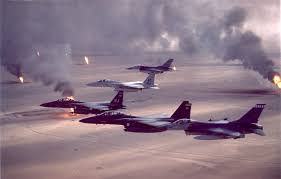
Examines the character of force structure and military conflict in the Middle East and outlines a nonoffensive defense posture for nations in the region. It also draws the implications of such a posture for arms transfers and arms control policy. An appendix reviews the pertinent lessons of the 1990-91 Gulf War.
How Low Can NATO Go?
by Carl Conetta and Charles Knight, Defense and Disarmament Alternatives, Institute for Defense & Disarmament Studies, 13 February 1990. ➪ PDF
For a summary of the contemporary European conventional arms control situation see Thomas K. Longstreth, “The Future of Conventional Arms Control in Europe,” FAS Public Interest Report Vol. 41 No. 2, February 1988 ➪ PDF
Defensive Restructuring of Ground Forces in Europe – workshop report
rapporteur, Carl Conetta. A workshop co-sponsored by the Institute for Defense and Disarmament Studies and the RAND Corporation featuring a presentation by Lutz Unterseher, a response by Barry Posen, and participant discussion, Washington, DC, 17 January 1989. ➪ PDF
In his presentation Unterseher warned that unless conventional arms reductions in Europe are combined with defensive reductions, they could actually undermine rather than improve stability by increasing both sides’ vulnerability to surprise attack. Posen agreed but judged that any significant shift toward a SAS-type alternative is not now feasible. Instead, a step-by-step process of bilateral reductions and restructuring might work.
Joint US-Soviet Seminar on Conventional Arms Reductions in Europe
by Carl Conetta, Conference Report, in Defense and Disarmament Alternatives, the newsletter of the Institute for Defense and Disarmament Studies (IDDS), January 1989.
 Report on the September 1988 conference, co-hosted by the Institute for World Economy and International Relations (IMEMO) and Institute for Defense and Disarmament Studies (IDDS), of Soviet and US arms control and military policy specialists. The report summarizes the exchange regarding problems and prospects for conventional force reductions in Europe.
Report on the September 1988 conference, co-hosted by the Institute for World Economy and International Relations (IMEMO) and Institute for Defense and Disarmament Studies (IDDS), of Soviet and US arms control and military policy specialists. The report summarizes the exchange regarding problems and prospects for conventional force reductions in Europe.
These meetings happened a little less than two months before President Gorbachev’s historic announcement at the UN in December of 1988 of substantial unilateral reductions and defensive restructuring of Soviet troops in eastern Europe – one of the most significant policy shifts in the process of ending the European Cold War. This international conference likely had more import than most.
The Sometimes You Win and Sometimes You Lose Hypothesis: Some Comments on the Use of Models in Force Comparisons
by Charles Knight, 18 March 1988. PDF
In this previously unpublished paper from 1988, the author reviews various models for simulating war along the Central Front in Germany and their relevance for finding a stable conventional force balance in Europe (and elsewhere.) Force structures that tend to produce stable outcomes in battlefield simulations are likely to have more deterrent value in the real world.
“[C]omplex models [can] be very useful in distinguishing the conditions (i.e. force structures, tactics, and armaments) that produce chaotic, oscillating, or unstable outcomes from those that produce stable outcomes.
“The outcome of a conflict between balanced forces as currently structured is unknowable and unpredictable. This would seem to support the position that no stable conventional deterrent to war can be built, short of overwhelming superiority. If that was as far as our analysis went, we [might] end up giving support to flexible response doctrine with its fundamentally unstable nuclear deterrent component. Of course, the favored option is to model restructured conventional forces that can take us out of the chaotic conventional battlefield and give us stable outcomes.”
The spiderweb defense
see full-text PDF
by John Grin and Lutz Unterseher, Bulletin of the Atomic Scientists, Volume 44, Issue 7, 1988.
